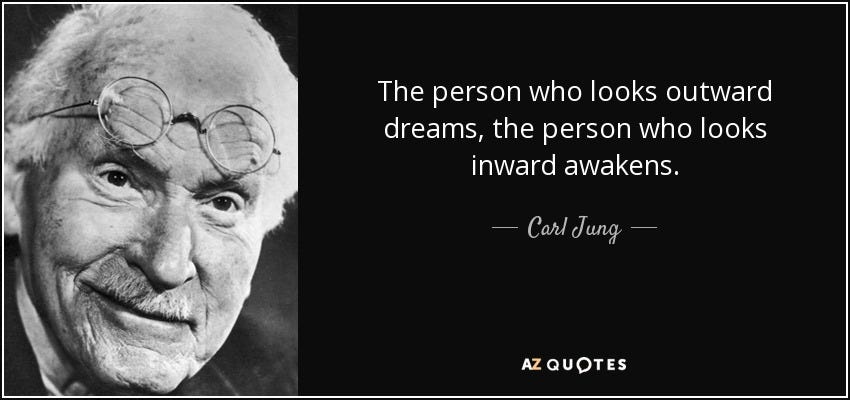In our last post, we discussed how the mystics of the world, particularly the eastern mystics, used right hemisphere intuition to realize the True Nature of Reality, that the West arrived at, thousands of years later, through left hemisphere logic and external experimentation, with the breakthrough discovery of quantum physics.
Eastern man turned his awareness inward and Western man turned his awareness outward.
Nowhere is this divergence more apparent than in religion. The Western religious tradition, Christianity, does not have mystical branch. Yes, there have been a handful of spontaneously realized mystics over the years, like Meister Eckart and Jacob Böhme, but there’s mystical branch of Christianity, unless you count Rosicrucianism (we’ll discuss this more at a later date).
Islam has the Sufis, Buddhism has Zen and Tantra, Hinduism has Advaita Vedanta and Kashmir Shaivism, and so on and so forth. Why is there no esoteric branch of Christianity?
Esoteric teachings exist to awaken the soul from illusion. They lead the seeker beyond appearance, beyond the illusion of separation, into direct, lived realization that separation is a dream, Reality is indivisible.
This is not poetic metaphor, this is the True Nature of Reality: the dissolution of subject and object, self and other, God and man. The esoteric path dismantles the false self-constructed by society. What remains is pure awareness, the light of the divine recognized as one's own being.
The commands of Jesus to love your neighbor as yourself, to love your enemy and pray for those who persecute you, are not moral rules. The ego is simply incapable of keeping these commandments.
These commands are pointing the way to an entirely different mode of being, based in an entirely different dimension of consciousness that Jesus referred to as the Kingdom of God, and the Kingdom of Heaven.
From the view of the Kingdom of Heaven, you are your neighbor. You are your enemy. Only when the illusion of “other” dies can such love become real. Without the collapse of dualistic perception, these teachings are impossible to live, and then Jesus’s divine message is reduced to hypocrisy, guilt, and the empty sermonizing we see from exoteric, institutional Christianity.
Exoteric religion, by contrast, is not concerned with awakening. It is concerned with control. It survives by maintaining the illusion of separation, between human and divine, clergy and laity, believer and heretic. It establishes hierarchies, enforces obedience, and defines salvation in terms it alone can dispense. Its function is not liberation but domestication. It trains people to fear their own inner authority and outsource their divinity to external figures, texts, and institutions.
Where the esoteric path empowers the individual to encounter the divine directly, the exoteric path demands submission to earthly authority. It weaponizes morality to punish disobedience and uses scripture as a prison, not a gateway. It is not the guardian of truth but the jailer of the soul. The way of awakening, the esoteric path, is not safe, not sanctioned, and not for sale. It is the narrow path Christ spoke of, walked in secret, and was crucified for revealing.
The reason that the West doesn’t have an esoteric school is because the Roman Catholic church killed it off time and time again. The aforementioned Böhme and Eckart both came very close to being executed, while Giardano Bruno and many others were executed, often by being burned at the stake. Saint Joan of Arc, at Saint John of the Cross were both executed only to later be canonized.
Sound familiar?
Christ was executed at the behest of the exoteric religious authorities of his day. Authorities who he repeatedly and openly criticized for being obsessed with dogma and rules, which were keeping people from entering the Kingdom of Heaven.
“Woe to you experts in the law, because you have taken away the key to knowledge. You yourselves have not entered, and you have hindered those who were entering.”
Luke 11:52
Christ’s original message was one of radical inner transformation and nondual love, a transmission of the divine unity that dissolves the illusion of separation between self and other, human and God. But as the Roman Empire adopted Christianity, it reshaped the faith into a tool of control. The canon of scripture was carefully selected to support hierarchy, obedience, and imperial authority, while esoteric teachings, the gospels that taught ways of liberation, were suppressed or declared heretical.
Original Christianity was lost, and with it the unique liberative techniques that Jesus taught were also lost. The keys were taken away once again, this time by Rome.
The Roman Catholic Church became the religious arm of the Roman Empire, and the Gospel of Christ became Imperial Christianity. Imperial Christianity and its legacy of control persists in all of its offshoots, including the Bible itself, Protestantism and modern evangelicalism, which is to say 99% of modern Christian institutions.
These institutions, despite their theological differences, share a common foundation: the distortion of Christ’s message into dogma designed to control and govern slaves, not to free souls. It’s all about money and power.
But there is a way back. It is possible to reverse engineer Original Christianity, which is something I’ve been working on for the last two decades, and something I’m finally ready to talk about.
Christianity is missing a Goddess, and that’s what we’ll discuss next time.
Until then, I leave you with the Gospel of Mary Magdalene:









I love you